Story at a glance:
- Westlake Royal Building Products has pioneered new technology that allows for a far greater variety of siding colors.
- Traditional siding solutions now mimic the texture of wood without the maintenance and upkeep.
- Vinyl siding is among the most sustainable cladding materials on the market today.
As the housing industry has roared back to life over the past year and new housing starts rise to levels not seen since the early 2000s, builders and architects are reexamining the design themes and material choices that will adorn the next generation of new homes.
Construction industry suppliers, meanwhile, see an opportunity to respond to new market trends with sustainable solutions and a diversity of aesthetic opportunities that reflect on the shortcomings of the previous boom years.
“During the ’90s and early 2000s what we saw was a lot of different colors of beige siding on all of those new homes. And that’s starting to change significantly,” says Steve Booz, vice president of marketing for Westlake Royal Building Products.
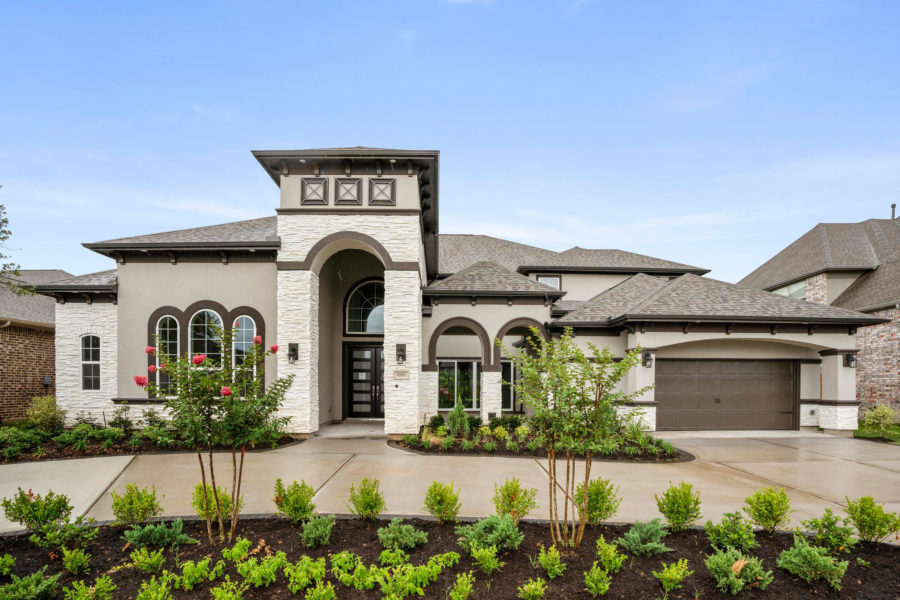
Home facade featuring Winterhaven Pro-Fit Alpine Ledgestone from Cultured Stone. Photo courtesy of Westlake Royal Building Products
Westlake Royal offers an enormous array of siding solutions, ranging from traditional vinyl to engineered stone panel systems. The company has invested significantly in the research and development of new materials, textures, and styles, helping to make traditional siding the top choice for builders—whether they prioritize quality or cost.
Booz sat down with gb&d to discuss the trends in the siding market, the surprising benefits of vinyl siding, and the industry’s commitment to sustainability.
Developers, contractors, and architects have plenty of choices when it comes to exterior cladding materials. What are the major benefits of siding?
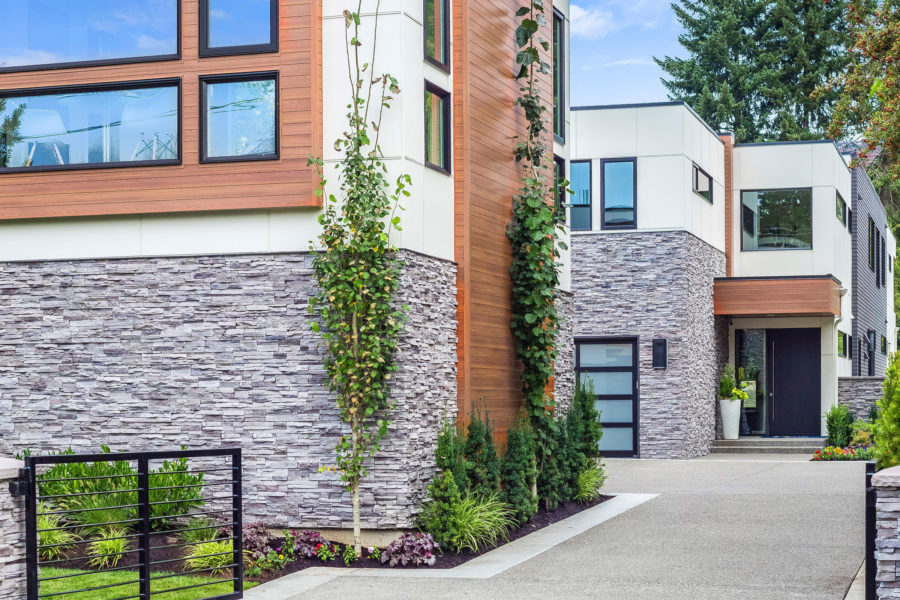
Two single-family units featuring Silver Lining Stacked Stone from Eldorado Stone. Photo courtesy of Heiser Media
When a developer or builder is looking at the various forms of exterior cladding, siding is a great choice, and part of that comes back to the variety we can provide. There’s an incredible array of design possibilities with siding—whether it’s vinyl, aluminum, cellular composite, or a combination of materials.
Overall people are looking for curb appeal. They don’t want the cookie-cutter, out-of-the-box aesthetic—they’re looking for something that makes their home truly stand out.
On this front, vinyl siding has come a long way from the traditional 1990s-era, 3-inch lap siding everyone was doing and that looked pretty busy on homes. The chemistry behind vinyl has evolved, increasing the durability and the textures and styles available, and it’s not uncommon now to see vinyl siding on million-dollar homes.
Ultimately homeowners want beauty, performance, and durability—and traditional siding is really the only solution that addresses each of these concerns. Everyone loves the look and texture of wood, but it isn’t very durable—it rots and weathers easily—and the maintenance and upkeep required of wood siding quickly becomes a hassle for homeowners.
What are the best options for builders when it comes to siding? What are the most popular materials and styles available today?
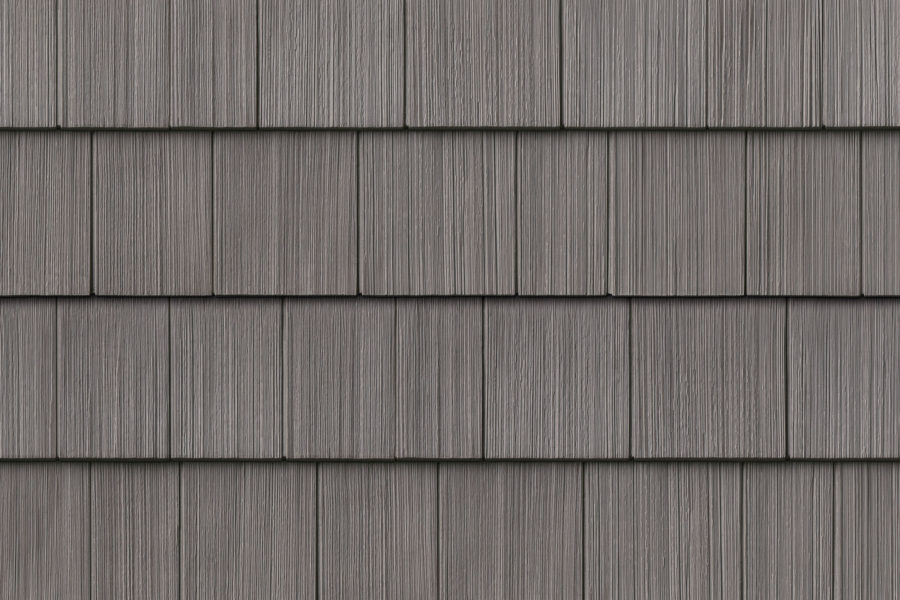
Portsmouth seen in rustic gray. Photo courtesy of Westlake Royal Building Products
Vinyl siding, as we discussed, really presents the best of both worlds in terms of aesthetics and durability—as well as sustainability—and is still the most popular solution today. And because of its versatility, vinyl siding is available in countless different styles.
For example, our Portsmouth Shake and Shingles line offers five profile options with a realistic natural cedar texture that blends seamlessly with other siding materials and styles. This is a great example of the direction the industry is going.
Or, for builders who love the look of fiber cement siding but want a more durable, maintenance-free option, cellular composite siding provides even better curb appeal without the laborious installation process. Westlake Royal’s Celect brand of cellular composite siding features interlocking joints, so there’s no need for special equipment or caulking the gaps between panels.
Poly-ash siding is a proprietary option exclusive to our TruExterior Siding line. Made with a blend of fly ash and polymers, it combines the authenticity of wood with a high level of dimensional stability and durability for resistance to warping, cracking, and splitting.
Stone siding is also becoming increasingly popular as builders seek to add a natural touch and a diversity of materials to the exterior of their homes. Our Cultured Stone, Eldorado Stone, and Versetta Stone products are all made from a concrete mixture cast in flexible molds and hand-colored with iron oxide pigments to perfectly resemble natural stone, hand-formed brick, and other materials. Each brand offers lightweight panelized profiles for rapid installation, and Versetta Stone in particular can be screwed into place without the need for mortar.
And while vinyl siding has maintained its position on the top of the pack, aluminum siding is making a comeback. We developed our Cedar Renditions™ aluminum siding line with a variegated wood-grain design that offers a modern, streamlined look on 6-inch panels. This makes for a perfect accent to brick or stone cladding.
How have siding systems evolved over the past decade? What has changed the most?
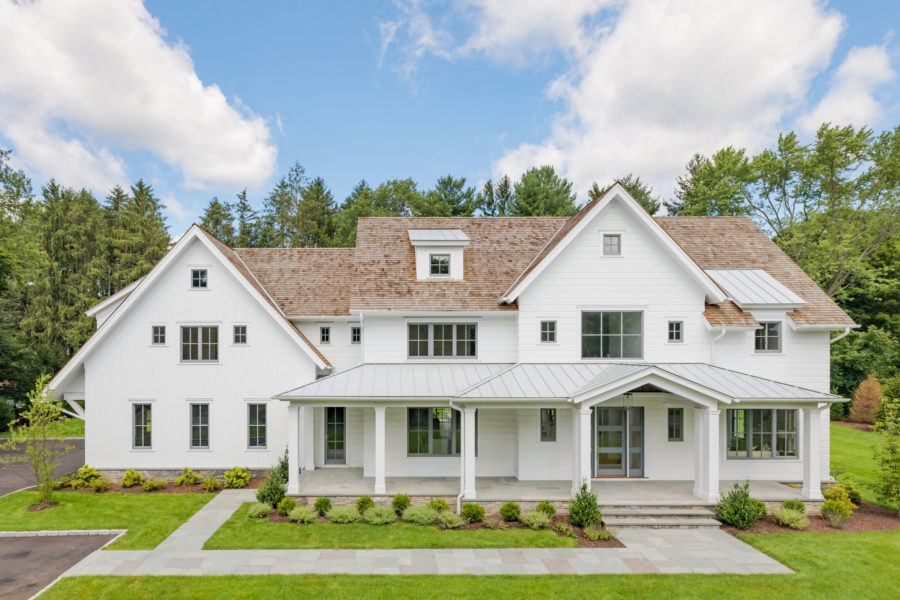
TruExterior vertical-shiplap and channel bevel pictured here on a home in Massachusetts. Photo courtesy of Westlake Royal Building Products
The desire for and availability of new colors has been one of the biggest changes I’ve seen over the past five to 10 years. We’re no longer seeing hundreds of new homes lined up together, all clad in monotonous horizontal siding with similar earth-tone shades, and part of that change has been advances in technology.
The problem was that darker colors not only absorb more heat that distorts the siding, but the color also faded much quicker—requiring more frequent upkeep. In response to these challenges we developed our Chromatix™ technology, which acts as a sort of sunblock for your siding.
On one side of the light spectrum, it protects your siding from the ultraviolet rays that gradually fade the color pigment of darker siding. On the other end of the spectrum is infrared energy that builds up heat and warps the siding. Chromatix reflects this energy so your siding stays cool and lasts longer.
TruExterior Siding also provides an option. Its high-performance attributes allow it to be painted any color, including dark hues.
Diversifying the spectrum of color that’s available for siding and trim has really opened up a whole new world of design opportunities. At the same time, architectural tastes have evolved in other ways. We’ve seen more mixing and matching of siding materials and styles, including shake and stone.
Trim systems have also evolved with siding and design trends. Our PVC trim and mouldings are designed to complement every type of siding and exterior cladding material—making it easy to work with.
And, of course, environmental sustainability has become a huge priority over the past decade.
How is the siding industry addressing sustainability?

Westlake Royal’s Celect brand of cellular composite siding features interlocking joints. Photo courtesy of Westlake Royal Building Products
The industry is taking sustainability very seriously, from our manufacturing processes to our material choices.
From an industry-wide perspective, we’re collaborating with the Vinyl Siding Institute to implement a remodeling recycle program, so if a contractor tears vinyl siding off a home, they bring that back to a central location nearby. That material is recycled back to one of the member manufacturers, so it’s a cradle-to-cradle operation.
Material choice is also critical. It’s long been thought that vinyl siding was not the sustainable choice because it’s made from plastic, which is an understandable point of view when you think of all the harm that single-use plastic does.
But when you really start looking at everything in the life cycle analysis, from manufacturing process and the ingredients that go into vinyl to the durability and the lifespan of the product, it really comes out on top. Vinyl siding is so durable it’ll be on your house for 50-plus years, which is the most resource-efficient way to go.
Vinyl has 79% less impact on climate change than fiber cement and 85% less impact than brick and mortar cladding. You’re far more likely to find recycled materials in vinyl than in other products.
We’ve also found other creative ways to recycle material. The fly ash used for our TruExterior Siding & Trim, for example, is a byproduct recovered from coal combustion.
Looking ahead, what are some of the top trends in the industry, and where do you see the market moving?
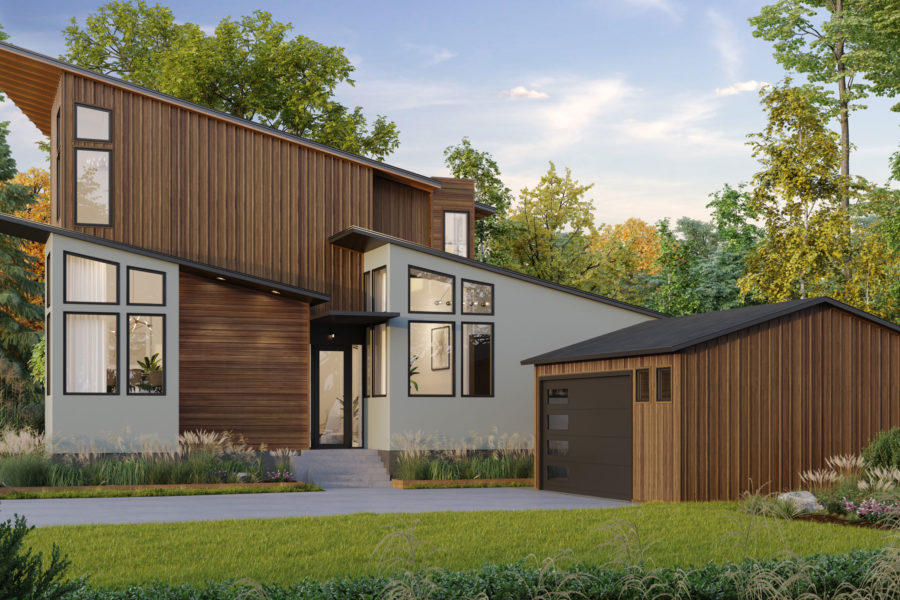
The Cedar Renditions aluminum siding line was developed with a variegated wood-grain design that offers a modern, streamlined look on 6-inch panels. Rendering courtesy of Westlake Royal Building Products
Low-maintenance siding options have always been popular, but we expect to see this become even more of a priority for builders and homeowners. Think about it. Baby boomers are aging and don’t want to worry about maintenance; at the same time, millennials are coming into the marketplace late, and one of the main reasons for that is they don’t want to spend their weekends repainting or re-siding their homes.
This also ties into another concern in the industry, which is around future trends in skilled labor. We were talking about labor shortages before the pandemic, but it’s only gotten worse. More skilled trades workers are retiring, and there are fewer young people going into the construction trades, which is raising costs and build-out times for developers.
That’s one of the reasons Westlake Royal Building Products has focused more on systems that are easier to install and maintain, so it opens the door for more people to be able to work with these products without the highly specialized training we saw in the past.
And from a design perspective, we are only seeing an acceleration of the trend of using a mixture of different materials on the exterior of homes. This has allowed for a far greater variety of design variation even within the same subdivision.
You’re seeing vertical siding mixed with stone knee walls, shake accents under the roof gables that complement 7-inch vinyl siding—all of these creative combinations that are moving the industry in an exciting new aesthetic direction.


